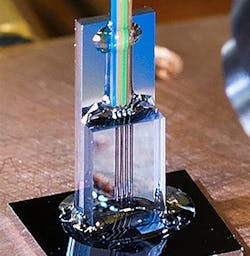Promising class of rugged photonic sensors can be used in high-radiation environments
GAITHERSBURG, Md. – Researchers at the National Institute of Standards and Technology (NIST) have published landmark test results that suggest a promising class of sensors can be used in high-radiation environments and to advance important medical, industrial and research applications. News-Medical.Net reports. Continue reading original article
The Military & Aerospace Electronics take:
3 Dec. 2018 --Photonic sensors convey information with light instead of electric currents in wires. They can measure, transmit, and manipulate streams of photons -- typically through optical fibers -- and are used to gauge pressure, temperature, distance, magnetic fields, and environmental conditions.
These rugged sensors are attractive because of their small size, weight, and power consumption (SWaP), as well as their tolerance of environmental variables like mechanical vibration. But the general consensus has been that high levels of radiation would modify the optical properties of their silicon, leading to incorrect readings.
So NIST, launched a program to answer those questions. The test results indicate the sensors could be customized for measuring radiation dose in both industrial applications and clinical radiotherapy. The results of its first round of testing is reported in Nature Scientific Reports.
Related: Navy looks to quantum photonic imaging technology for stealthy underwater sensors
Related: DARPA reaches out to industry for small optical sensor using free-space optical technology
Related: Four companies to develop enabling technologies for tomorrow's electro-optical lidar sensor
John Keller, chief editor
Military & Aerospace Electronics
Ready to make a purchase? Search the Military & Aerospace Electronics Buyer's Guide for companies, new products, press releases, and videos

